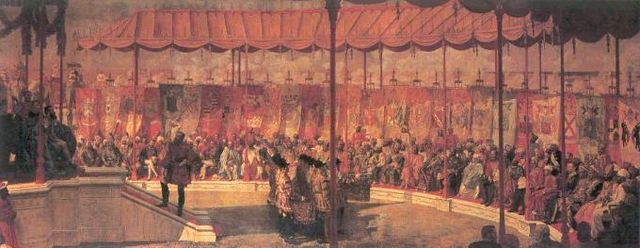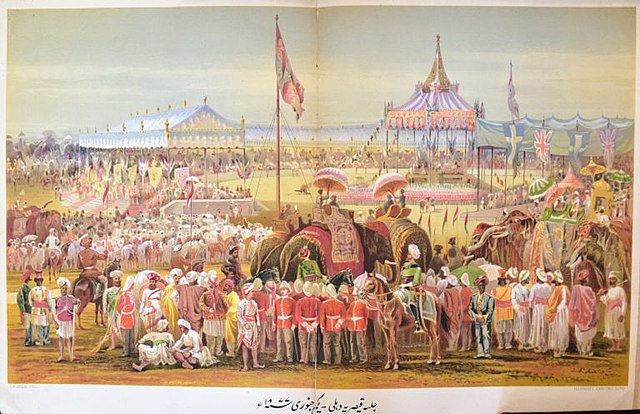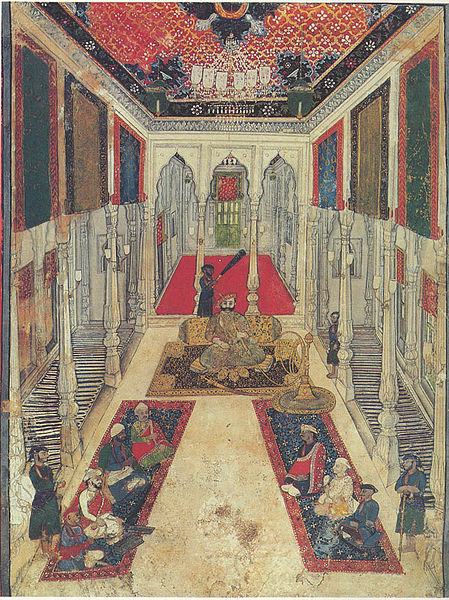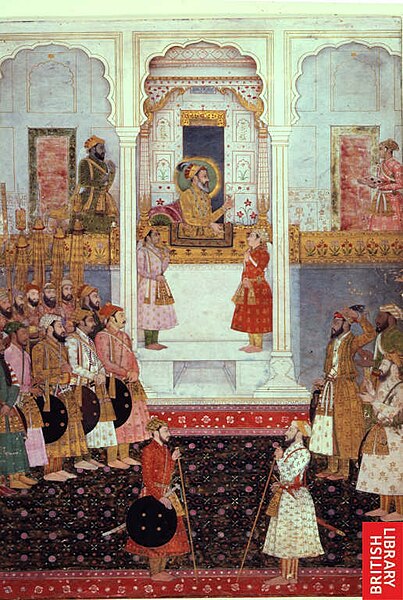The Delhi Durbar was an Indian imperial-style mass assembly organized by the British at Coronation Park, Delhi, India, to mark the succession of an Emperor or Empress of India. Also known as the Imperial Durbar, it was held three times, in 1877, 1903, and 1911, at the height of the British Empire. The 1911 Durbar was the only one that a sovereign, George V, attended. The term was derived from the common Persian term durbar.
The Delhi Durbar of 1911, with King George V and Queen Mary seated upon the dais.
The Delhi Durbar of 1877. The Viceroy of India is seated on the dais to the left.
This illustration depicts some of the shān-o-shaukat (pomp and show) of the imperial assemblage in Delhi in January 1877
Lord and Lady Curzon arriving at the Delhi Durbar, 1903.
Durbar is a Persian-derived term referring to the noble court of a king or ruler or a formal meeting where the king held all discussions regarding the state. It was used in South Asia for a ruler's court or feudal levy. A durbar may be either a feudal state council for administering the affairs of a princely state, or a purely ceremonial gathering, as was increasingly the case during British rule in India.
A Maratha durbar showing the raja and the princely state's nobles: sardars, jagirdars, istamuradars, and mankaris.
Mughal emperor Shah Jahan and prince Aurangzeb in the royal court, 1650
Gallery for the queen and her ladies at Thirumalai Nayakkar Mahal, Madurai
The Durbar Hall at Jaipur








